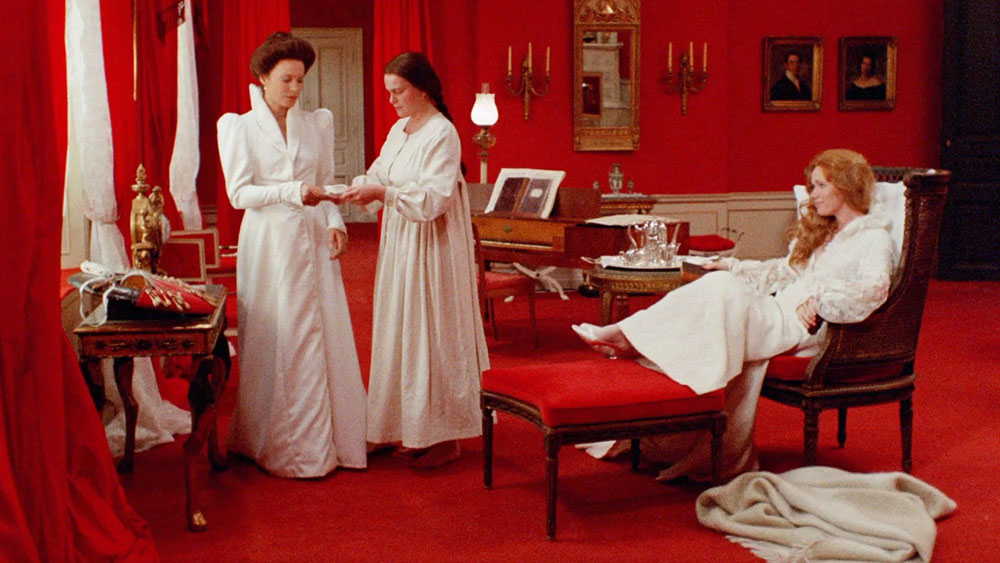Siblings Maria, Agnes, and Karin are overly literate. They sit in the family manor presided over by four books. In order of appearance, these are: the diary of cancer-stricken Agnes; the family accounting ledger overseen by Karin; Pickwick Papers by Charles Dickens—a satire of moneyed tribulations read aloud by Maria as Agnes dies; and finally, a small volume we might take for Lutheran prayers. The town priest, one of a few impotent men who glide in and out of the house, holds that last book and quavers as he makes this strange, precariously reasoned appeal beside the corpse of Agnes:
If it be that you gathered our suffering in your poor body and have borne it with you through death; if it be that you meet God there in that other land; if it be that He turns His face towards you; if it be that you will know the language of Our Lord; if it be that you can speak to the Lord; if all of this be so: then pray for us. […]
But no facts can be established where signs reign. Ironically, Agnes cannot even fulfill the priest’s first conditional of death, because though she may have passed in a biological sense, in the symbolic manner she lingers on.
Gold clocks and marble figurines mock the emotional stasis of the family’s ancestral home. The sisters watch one another's faces, each deepening wrinkle taken as childhood injury resurfaced. Their obsession with keeping score of harms is threaded via the motif of money, instanced by Karin’s glasses-accessorized bookkeeping and the petty tale of Mr. Pickwick (Maria trills Dickens’s prose: “‘But surely, my dear sir […] surely you don’t really mean, really and seriously now, and irritation apart, that you won’t pay these costs and damages?’”). Punctuating the cannibalistic sentiment in using one another to relive their injuries, actress Liv Ullman, whom we are meant to recognize as Maria, also plays the sisters’ mother in a flashback.
Meanwhile, Agnes writes a diary. Clad in white against the blood-red house around her, she pens, in soft cursive, an account of her sickness mingling with the pleasures of being nursed by family. Rather than disrupting the bitterness spread across the film, these idyllic sequences feel laden with the same paranoia that plagues the other sisters. After all, a diary is the language one addresses to oneself, keeping tabs on the error of watching one’s own reflection. Agnes continually writes herself into the role of sacrificial lamb, meant to ease the world of suffering by her departure, but the more she composes herself toward that abstraction, the more desperately she clings to self-preservation.
And what of Ingmar Bergman’s heavy-handed appeal to symbols? Cries and Whispers was criticized by writers out of the 1960s New Left in Sweden and abroad for a fixation on religion and nineteenth-century classicism at a time when wars and theory had already ruptured the European cultural sphere, but was also especially welcomed by Americans as a quaint show of Nordic austerity. The feature has vacillated between frivolity and earnest work for filmgoers since its release in 1972. This ambivalent reception feels appropriate for a film that itself wavers between the registers of a proof and a joke, ever deferring both truth statement and punchline.
Cries and Whispers screens this evening, April 28, at Metrograph on 35mm.



